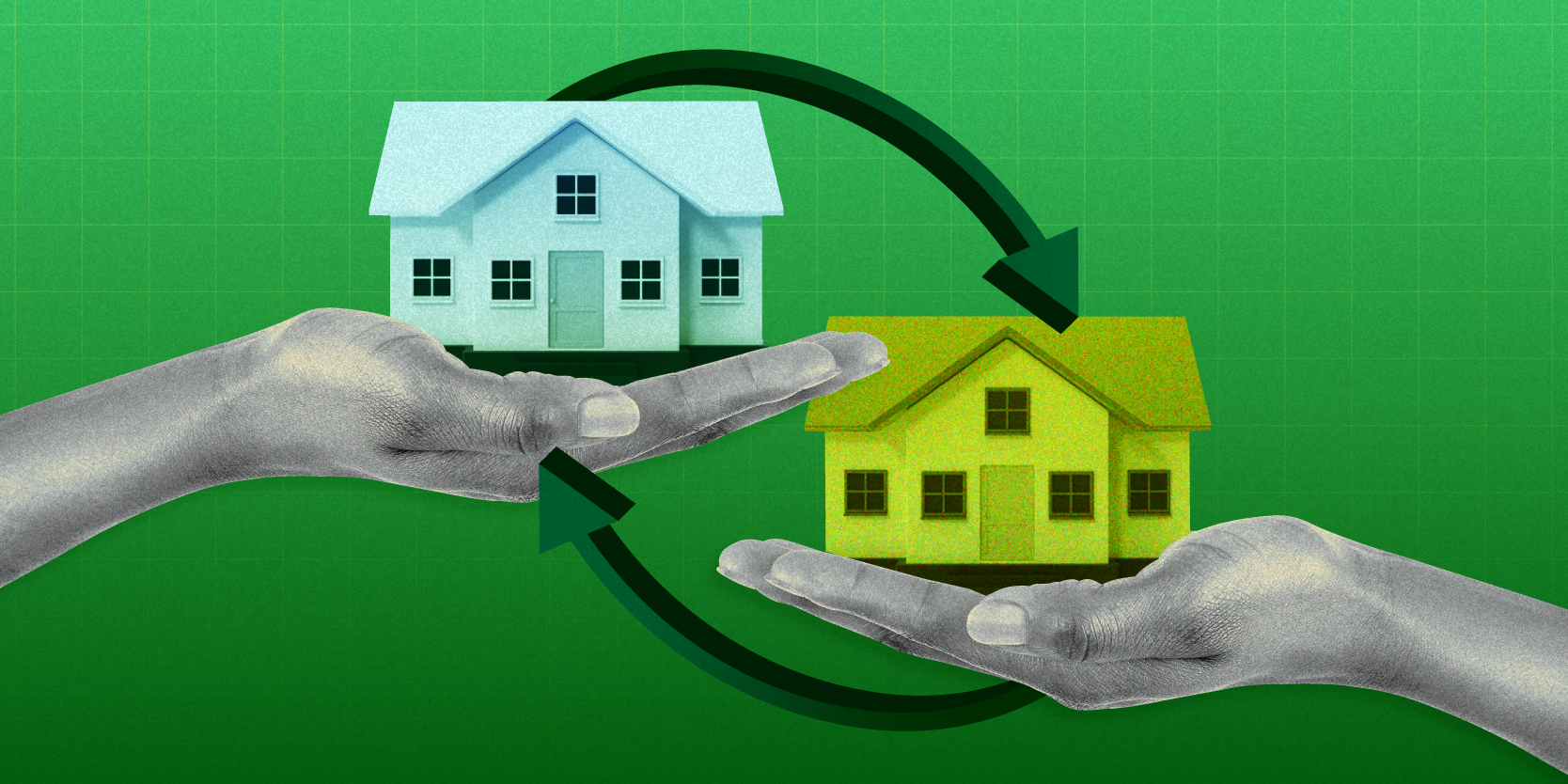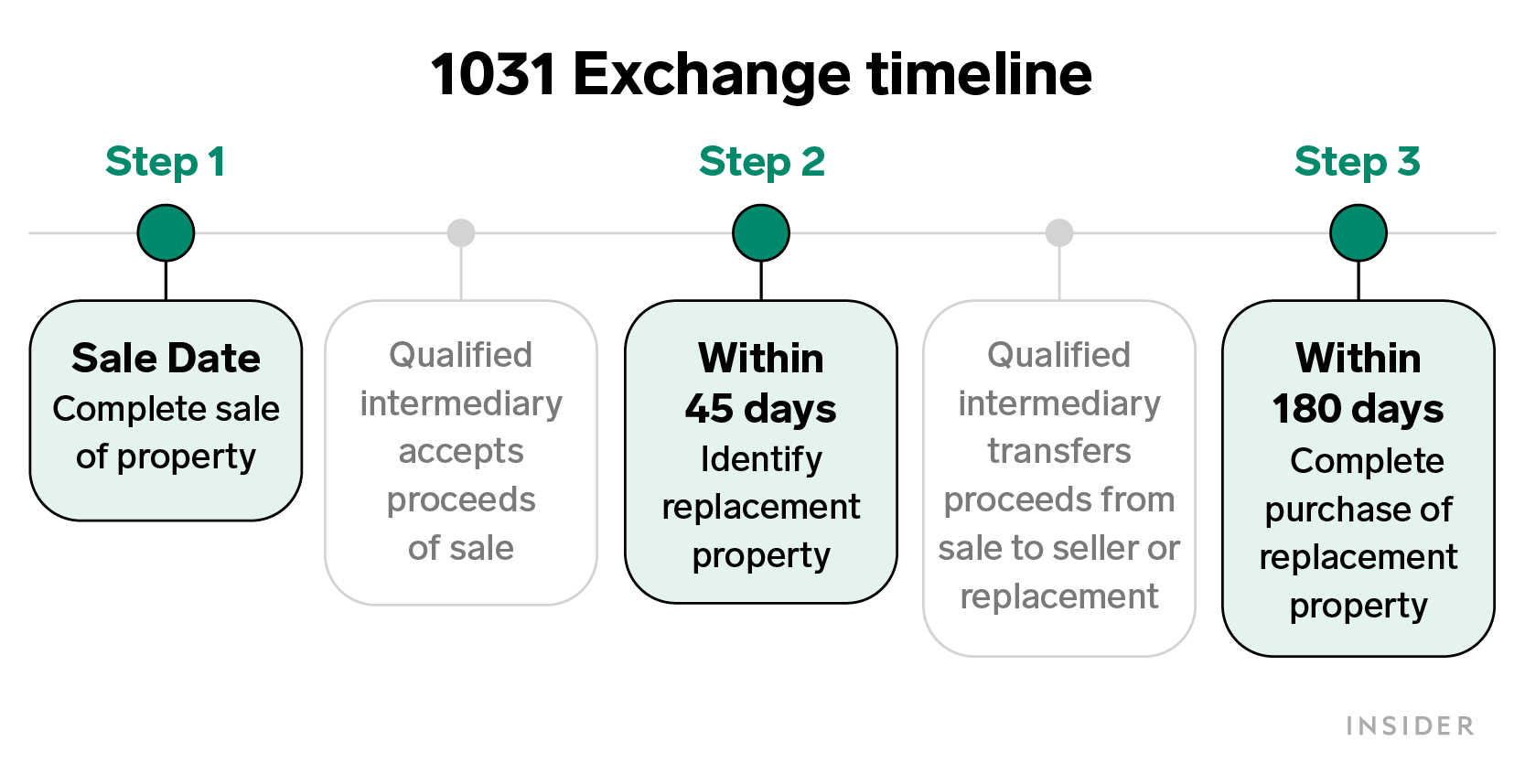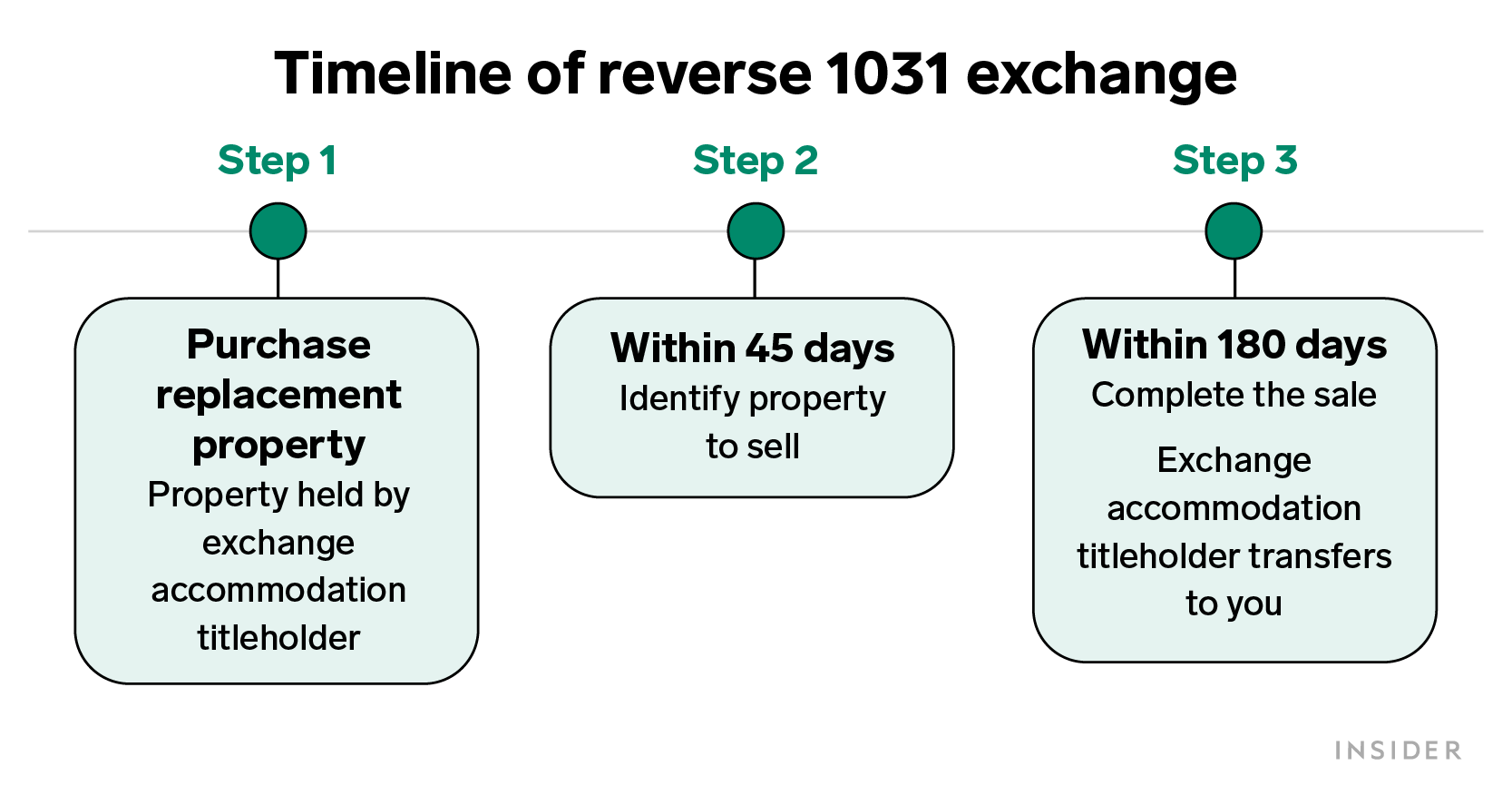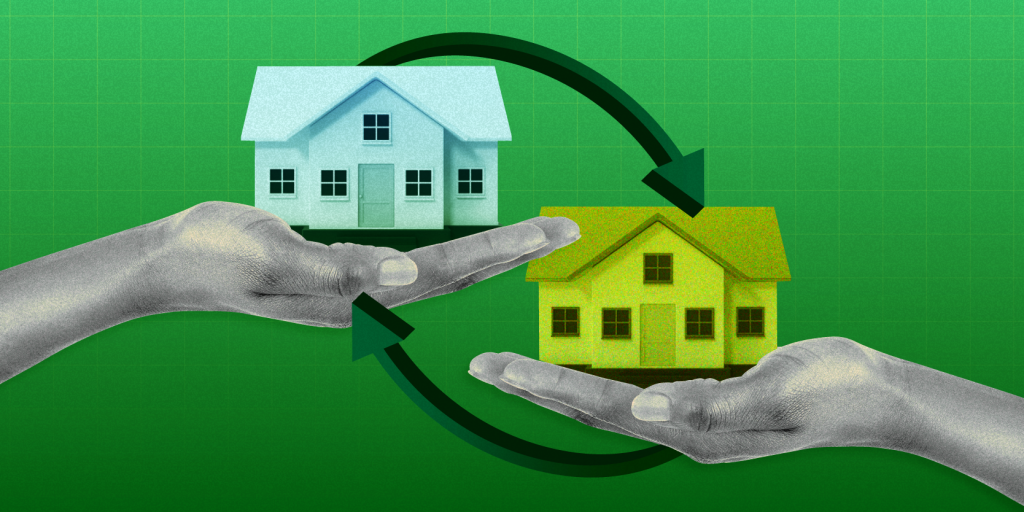
Pixelsquid; Alyssa Powell/Insider
- A 1031 exchange lets you sell one property, buy another, and avoid capital gains tax in the process.
- There's a strict time limit on 1031 exchanges. You must purchase your new property within 180 days.
- A 1031 exchange can help you buy more profitable properties, diversify, or defer taxes associated with depreciation.
- Visit Insider's Investing Reference library for more stories.
A 1031 exchange is a type of real estate purchase allowed under Section 1031 of the US Internal Revenue Code. It allows you to defer capital gains taxes when selling a property, as long as the proceeds are used toward a similar investment within a certain time frame.
As Adam Kaufman, co-founder and chief operating officer of real estate crowdfunding platform ArborCrowd, explains: "By using 1031 exchanges, real estate investors are able to sell a real estate asset and reinvest the proceeds into a like-kind investment – another real estate asset – and defer the capital gains tax associated with the transaction."
How a 1031 exchange works
The exact 1031 exchange process depends on the type you're using (more on this later). In most cases, it works like this: First, you'd determine the property you want to sell, and identify the exchange facilitator you want to handle the transaction.

Then, like many investors, you'll probably want to have a qualified intermediary hold the proceeds of your sale until you've identified the property or properties you'd like to purchase. After that, you have 45 days to find your replacement investment and 180 days to purchase it.
It sounds complicated, but there are many reasons you might use a 1031 exchange.
"In a typical real estate transaction, an investor can expect to pay as much as 40% of the taxable gain," says Paul Getty, chief executive officer and president of First Guardian Group. "Now, with a 1031 exchange and with the ability to defer those capital gains taxes, investors can seek out a different sort of investment, diversify their holdings, expand their portfolio, or realign their investments with their long-term goals."
You can also use a 1031 exchange to buy a property with better cash flow or reset the clock on depreciation. Depreciation essentially allows you to pay fewer taxes as a property experiences wear and tear over time. For residential rental properties, the benefit is gradually spread out over 27 ½ years.
Typically, if you used depreciation to your advantage, then you'd owe what's known as depreciation recapture - or income taxes on the financial gains you realized from doing so - once you sell the home. Using a 1031 exchange can allow you to push these payments out to a later date.
While deferring these taxes (and capital gains) is a nice benefit, 1031 exchanges aren't free. You'll still owe a variety of closing costs and other fees for buying and selling a property. Many of these may be covered by exchange funds, but there's debate around exactly which ones. To find out which costs and fees you may owe for a 1031 exchange transaction, it's best to talk to a tax professional.
What are the rules for a 1031 exchange?
There are several rules that come with a 1031 exchange, so be sure you're well-versed in them before selling your property.
- The replacement property must be of equal or greater value than the original.
- You can purchase as many as three properties without regard to the fair market value, or any number of properties as long as their aggregate value doesn't exceed 200% of your original property's sale price.
- You must identify your replacement property (or properties) within 45 days of selling the first property.
- The purchase of the replacement(s) must be completed within 180 days of your initial property sale.
If your property is financed or mortgaged, you'll need to take on at least the same debt for the new property. As Kaufman puts it: "If an investor's debt liability decreases as a result of the sale and purchase of a new asset using less debt, it is considered income and will be taxed accordingly."
The different types of like-kind exchanges
A 1031 exchange is a like-kind exchange - a transaction that allows you to essentially swap one asset for another one of a similar type and value. Technically, there are several types of 1031 like-kind exchanges, including delayed exchanges, built-to-suit exchanges, reverse exchanges, and others.
Delayed exchanges
According to Getty, the delayed (also called deferred) exchange is "by far the most common 1031 exchange." This is the traditional type of exchange noted above - wherein you must identify a new investment within 45 days and purchase it within 180 days.
Build-to-suit exchanges
A build-to-suit 1031 exchange allows an investor to use the proceeds of their property sale to not only purchase a new investment but fund improvements on the replacement property, too. As with other exchanges, the value of the replacement property (after improvements) must come out to be equal to or greater than the sale proceeds of the initial property.
Reverse exchanges
In a reverse exchange, the replacement property is purchased first, and then the initial property is relinquished afterward.

As in a delayed exchange, both steps must occur within 180 days. You'd use an exchange accommodation titleholder to retain the property while you sell your previous one.
Other types of exchanges
There are other types of exchanges, too - including a drop-and-swap exchange and a tenancy-in-common exchange.
The drop-and-swap exchange is used in the case of partnerships. "A drop-and-swap exchange occurs when an investor has partners that either want to cash out of the transaction or invest in the replacement property," Kaufman explains. "In short, the 'drop' refers to the dissolution of the partnership and the partners cashing out. The 'swap' is when partners invest their common interests into the replacement property instead of cashing out."
With a tenancy-in-common, as many as 35 investors can pool funds and purchase a property. When the property is sold, each can perform a 1031 exchange with their portion of the proceeds.
The financial takeaway
A 1031 exchange transaction can help you avoid short-term capital gains taxes and continue growing your wealth through real estate.
They are complicated purchases, though, so make sure you have an experienced intermediary on your side, and consider consulting a tax professional before moving forward. This can ensure you make the best decision for your long-term financial health.
